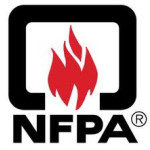- Industry: Fire safety
- Number of terms: 98780
- Number of blossaries: 0
- Company Profile:
Established in 1896, NFPA's mission is to reduce the worldwide burden of fire and other hazards on the quality of life by providing and advocating consensus codes and standards, research, training, and education.
The number of watts (or the fraction of a watt) of radiant power from a point source radiator, applied as a unit step signal at the wavelength of maximum detector sensitivity, necessary to produce an alarm signal from the detector within the specified response time.
Industry:Fire safety
The output of a laser operated in a continuous rather than a pulsed mode.
Industry:Fire safety
The periodic operating contingencies of a particular geographic region that are established to overcome a specific set of circumstances (e.g., crop harvest, rainy season).
Industry:Fire safety
The minimum concentration of oxygen, expressed as percent by volume, in a mixture of oxygen and nitrogen that will just support combustion of a material under conditions of ASTM D 2863, Standard Test Method for Measuring the Minimum Oxygen Concentration to Support Candle-Like Combustion of Plastics (Oxygen Index).
Industry:Fire safety
The number of minutes a new, fully charged battery at 26. 7°C (80°F) can be discharged at 25 amperes while maintaining 1. 75 volts per cell or higher.
Industry:Fire safety
The movement of occupants from a fire zone to a safe area within the same building.
Industry:Fire safety
The measure of the ability of a fully loaded vehicle to negotiate a ramp without encountering interference between the vehicle and the ramp between any two axles.
Industry:Fire safety
The patching, restoration, or painting of materials, elements, equipment, or fixtures for the purpose of maintaining such materials, elements, equipment, or fixtures in good or sound condition.
Industry:Fire safety
The point within a vehicle at which all of its weight can be considered to be concentrated.
Industry:Fire safety
The overhead service conductors from the last pole or other aerial support to and including the splices, if any, connecting to the service-entrance conductors at the building or other structure.
Industry:Fire safety
